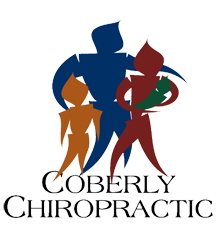Why Gait Analysis Is Important With Chiropractic Care
The way a person walks, their gait, can be very telling. It can reveal problems in the feet, ankles, knees, and hips – even in spinal alignment. A problem with gait can indicate pain in a patient as well as serious conditions like diabetes and arthritis. It is a diagnostic tool for many conditions, injuries, and syndromes including autism. When it comes to chiropractic care, a patient’s gait can offer very important clues regarding the root of their complaints, allowing for a more well-rounded, whole body approach to treatment. If you think that the way you walk or moves doesn’t really matter, think again. It most certainly does matter.
What is Gait Analysis?
Gait analysis is a set of tests that are designed to provide a comprehensive evaluation of a person’s gait. It is a systematic study of human motion that involves observation as well as the use of instruments that measure body movements, muscle activity, and body mechanics.
It is intended to be used as an assessment tool and provide insight into devising a treatment plan for people who have conditions or injuries that affect their ability to walk. It is often used in sports biomechanics to aid athletes in more efficient movement and to identify problems with movement or posture, particularly those with injuries.
During the analysis, the patient may walk in a prescribed pattern or on a treadmill, that is often connected to a computer, while the chiropractor observes them from various angles. Often cameras are used, places at various points in order to capture different views including the anterior, posterior, and sides.
The patient may have markers applied to certain points on the body such as the knee, ankle, pelvis, and other areas. As they move, the computer captures specific data of the movement, providing a three-dimensional calculation of each marker. It them applies a model to assess the movement of the skeletal structure, resulting in a detailed analysis of each joint’s movement.
Factors that Affect Gait Analysis
There are certain factors that affect a person’s gait and that information must be included in order for the gait analysis to be accurate. The gender, age, height, and weight of the person is vital because men and women move differently and as a person ages their structure changes.
Excess weight or they physique can affect a person’s posture and their gait. The individual’s shoes (or lack of shoes) is important, as is their clothing, the terrain they are walking on, and anything they may normally carry, such as a purse. Other factors include:
- Physiological factors such as body proportion
- Psychological factors such as their state of mind, emotions, stress level, and personality type
- Pathological factors such as neurological diseases, psychiatric disorders, trauma, and musculoskeletal anomalies
It will also measure and factor into the analysis data that includes the patient’s:
- Length of stride
- Cadence
- Hip angle
- Foot angle
- Step length
- Walking or movement speed
- Other areas as needed
Advantages of a Gait Analysis
Getting a gait analysis can be very advantageous because it can provide invaluable insight into how your body is aligned and how it moves. It is a great diagnostic tool for identifying health issues related to the gait, spine, and feet and can also help provide early detection of health issues prior to the onset of symptoms.
If your chiropractor recommends that you get a gait analysis it could be that he or she suspects that something is going on, or it could simply mean that they want to more thoroughly examine you to provide optimal care. If you have any concerns, you should sit down with your chiropractor and ask them any questions that you have prior to undergoing the analysis. Stress and anxiety can put tension on the muscles and body, affecting the results.


